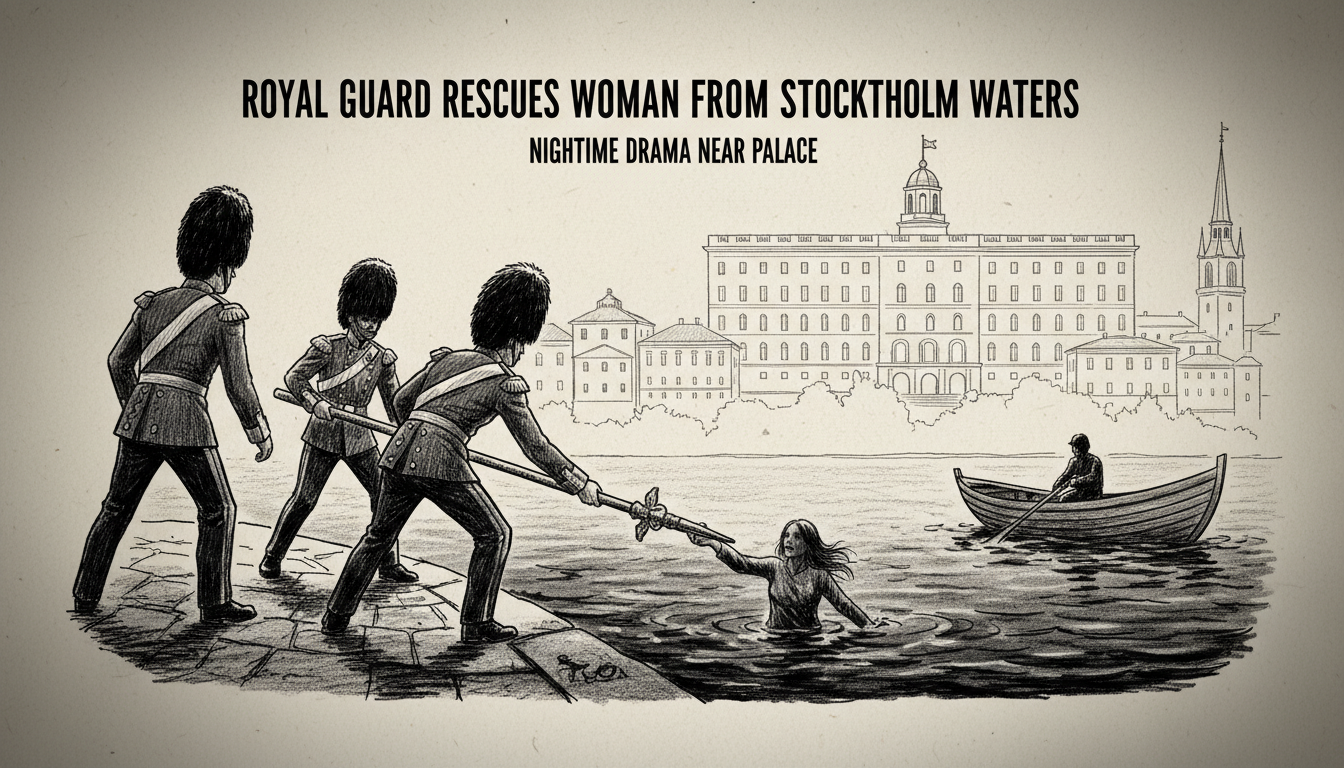A young woman owes her life to the quick actions of Sweden's Royal Guard in Stockholm's Old Town. Soldier Sebastian Beijer Carlsson jumped into the cold waters near Skeppsbron after spotting a woman struggling in the strong current. The dramatic rescue occurred during the late night hours near the Royal Palace, highlighting the unexpected dangers that can emerge in the city's picturesque waterfront areas.
Carlsson described the tense moments in a statement to officials. He said the woman was quite far out in the water and appeared to be in shock when he reached her. Several members of his platoon worked together to pull the woman safely onto the quay. Emergency services already stood ready to assist and immediately took over care of the hypothermia victim.
This incident showcases the multifaceted role of Sweden's military personnel beyond their ceremonial duties. The Royal Guard, known for their striking blue and yellow uniforms and precise marching routines, demonstrated their readiness for real-world emergencies. Their training at the K4 Norrlands Dragonregemente in Arvidsjaur clearly prepared them for this unexpected crisis in the heart of the capital.
Stockholm's relationship with water runs deep, both literally and culturally. The city spreads across fourteen islands connected by fifty-seven bridges, making water safety a constant consideration. While summer brings swimming and boating activities, the cold waters remain dangerous year-round. This rescue serves as a sobering reminder of the risks that accompany the city's beautiful aquatic setting.
Local residents often gather along Skeppsbron to watch the changing of the guard ceremony, unaware that these soldiers stand prepared for more than ceremonial duties. The area represents one of Stockholm's most historic neighborhoods, where centuries-old buildings meet modern city life. Such emergencies demonstrate how traditional institutions continue serving contemporary needs.
The woman has reportedly recovered from her ordeal, though attempts to contact her directly have been unsuccessful. This positive outcome reflects well on Sweden's emergency response coordination between military and civilian services. The seamless cooperation between different response units shows the effectiveness of Sweden's public safety systems.
For international visitors and new residents, understanding Stockholm's water safety becomes crucial. The city offers numerous waterfront attractions from the Vasa Museum to the ABBA Museum, all located near potentially dangerous currents. This rescue underscores why visitors should respect water safety guidelines while enjoying Swedish cultural experiences.
Swedish society maintains strong trust in its military and emergency services, and incidents like this reinforce that confidence. The soldiers' instinctive response reflects training that prepares them for both expected duties and unexpected crises. Their actions demonstrate why Swedes take pride in institutions that protect citizens and visitors alike.

